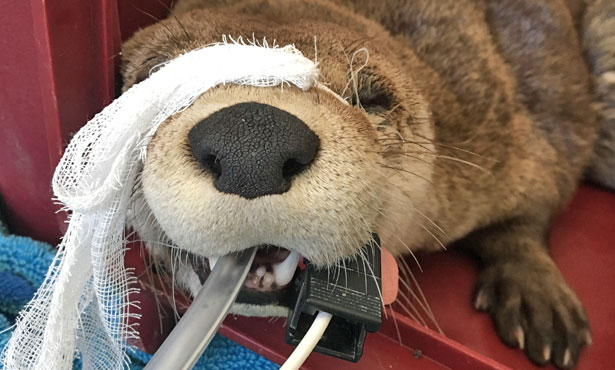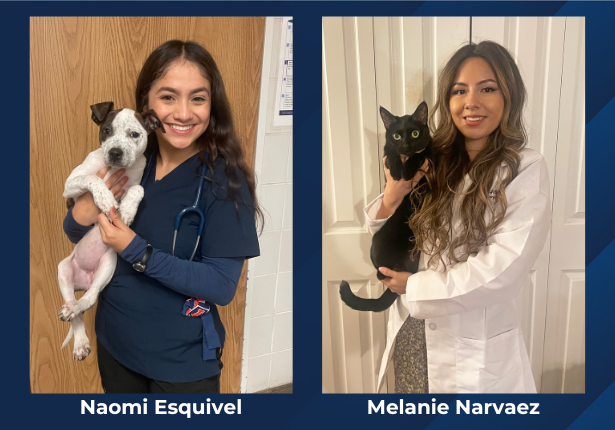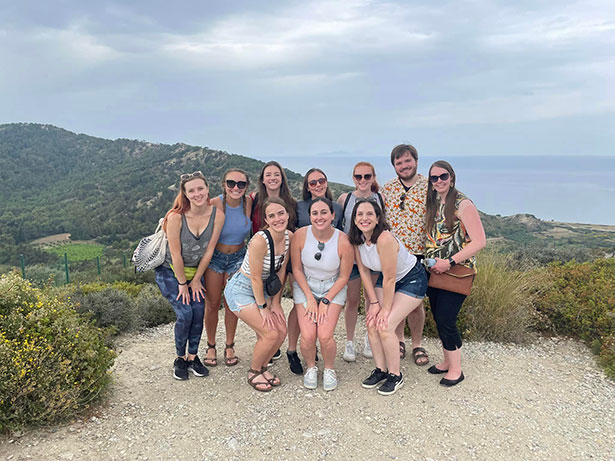As a second-year veterinary student, it is a nice change to be back on rotations. After many quarters spent in the classroom, the learning style in the clinics helps to break up the material.
This week, I was on wildlife and exotic animal medicine and surgery (WEAMS) rotation. I really enjoyed this rotation because I have very little experience with exotics and I learned how to apply small animal medicine to a variety of animals. We were able to see many different cases as well as be involved in informational rounds. The best part of this rotation for me was the day we went to the zoo because we were able to give medical care to animals I’m not used to being so close to.
The benefit of having rotations early on in the curriculum is to practice our clinical skills and learn necessary information from a different aspect. One of the reasons I chose U of I is because of this opportunity.
Jen Tito, Class of 2020
Our first patient was a river otter (pictured above) that received a wellness exam. She was put under general anesthesia and everyone worked together to ensure it went smoothly. I was given the opportunity to provide breaths to the otter through the anesthesia machine. Being hands-on allowed me to understand how the anesthesia machine worked, which is vital for my future career. There are many important aspects of veterinary medicine that cannot be taught in a classroom environment and actually doing them in the clinic makes the material stick.
We were able to be involved with other animals throughout the rest of the rotation. Each of us performed our own physical exam on box turtles. We used the same concepts as with dogs and cats and could apply that to these turtles. We assessed hydration, body condition score, and overall health.
Back at the clinic, we did the same with cockatiels. While working with these animals was not always comfortable for me, it allowed me to push myself and do things I didn’t know I could. These concepts will allow me to work with small mammals that are brought into private practice and be confident in my abilities.
Besides being hands-on with cases, we also were taught a lot of necessary info in general. Each of us was given an article to read and summarize to help us better understand the material out there and determine if it is useful. We will need to be able to research species we are not familiar with to treat them, as well as push aside any irrelevant information. We were also involved in rounds and learned important diseases small mammals can be susceptible to.
Every part of this rotation was a learning experience, from witnessing the cases themselves to being involved in discussions. The benefit of having rotations early on in the curriculum is to practice our clinical skills and learn necessary information from a different aspect. One of the reasons I chose U of I is because of this opportunity. I think without it many of us would graduate with much less confidence. WEAMS was by far my favorite rotation because I was able to work with species unfamiliar to me and experience something novel. What we learned on this rotation was valuable for most any field we go into. After just a week, I feel I have learned enough to give me a good basis for small mammal exams. I hope everyone gets to experience WEAMS before their clinical year because the clinical experience will only benefit us in other areas and help us become more informed veterinarians.




